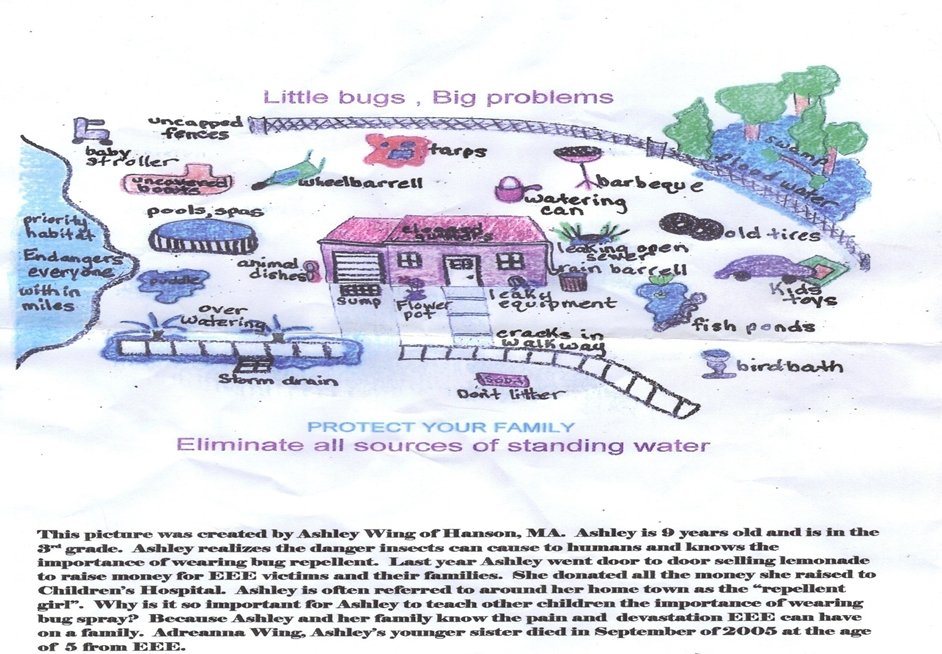Together with our tick and mosquito treatment, we think prevention is extremely important. We hope you’ll find these Prevention Tips helpful.
Managing Mosquitoes: What You Should Know
Protect Yourself:
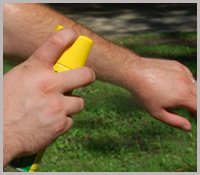 Avoid outdoor activities during peak mosquito times (dusk to dawn)
Avoid outdoor activities during peak mosquito times (dusk to dawn)- Wear light colored long sleeve shirts, pants, and socks
- Use insect repellent when you are going to be outdoors. (Check with your pediatrician before applying repellents to children younger than two (2) years of age).
- Wash all clothing before wearing again.
- Do not wear perfumes or colognes if you will be outside for an extended amount of time.
- Use mosquito netting around infant car carriers and strollers when outdoors.
Reduce the Mosquito Population on Your Property:
- Eliminate standing water. Mosquitoes can develop in a puddle or standing water lasting longer than four (4) days.
- Turn over watering containers, flower pots, buckets, wheelbarrows or any object that can collect water
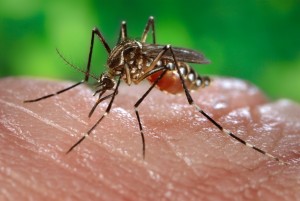
- Eliminate standing water on the covers of pools and hot tubs that are not open for the season.
- Check gutters for debris and areas where water could potentially pool
- Change bird bath water at least twice a week or more frequently
- Change pet watering dishes frequently
- Remove old tires. Tires make the perfect breeding ground for mosquitoes.
- Aerate ornamental ponds, pools, and fountains
- Chlorinate pools and hot tubs
- Make sure trashcans are tightly sealed and/or drill drainage holes in the bottom.
- Check for forgotten items behind garages and sheds.
- Make sure window screens are in good working order. Screens should be bug tight or 18 x 18 strands per inch.
- Use shades. Mosquitoes will be attracted to the vicinity of the house and doors by the light being reflected outside of an un-shaded room.
- Change outdoor lighting from white incandescent to yellow or amber.
Managing Ticks: What You Should Know
Protect Yourself:
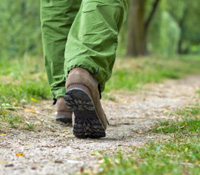 Wear light colored clothing (spotting a tick is easier)
Wear light colored clothing (spotting a tick is easier)- Pants should be tucked into socks
- Shirts should be tucked into waistband
- Use an approved insect repellent when outdoors
- When outside walking stay on trails
- Avoid areas known to have a high tick population
- Use an insect repellent when you are going to be outdoors. (Check with your pediatrician before applying repellents to children younger than two (2) years of age).
- Wash all clothing before wearing again.
Reduce the Tick Population on Your Property:
- Discourage rodent and deer activity
- Remove leaf litter
- Keep grass mowed and well groomed
- Remove yard clippings (mowed grass piles, brush)
- Move firewood piles and bird feeders away from the house
- Relocate children’s play areas away from woodland edge
- Examine and repair the masonry of stonewalls
- Create “Tick-Safe Zones” (wood chip/ground buffer – ticks dehydrate in this environment)
Removing A Tick:
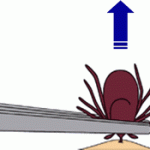 Remove a tick as soon as possible from the body
Remove a tick as soon as possible from the body- Prompt removal of a tick is critical
- Use tweezers
- Get as close to the skin’s surface around the tick’s head
- Grasp by closing the tweezers
- Pull the tick up slowly and steadily with evenly applied pressure
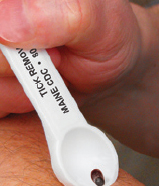
- Slow, even and steady pressure will help to keep the mouthparts intact
- Do not twist or jerk the tick as the mouthparts can remain attached
- Once removed, disinfect and cleanse the wound site
- If you think you have Lyme disease contact your physician
What NOT To Do When Removing a Tick:
- Do not remove with bare hands
- Do not crush the tick
- Do not put a hot match to the attached tick
- Do not smother with petroleum jelly, gasoline, petroleum products or nail polish
How To Submit A Tick For identification or testing:
If you would like to have a tick identified or tested for lyme disease, please visit the University of Maine’s Tick Lab website for instructions.

